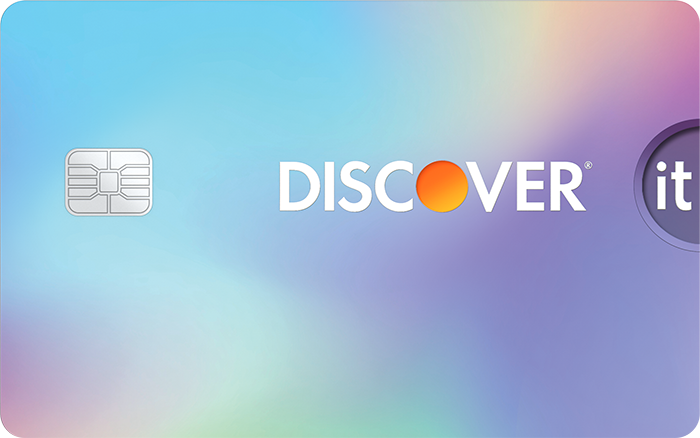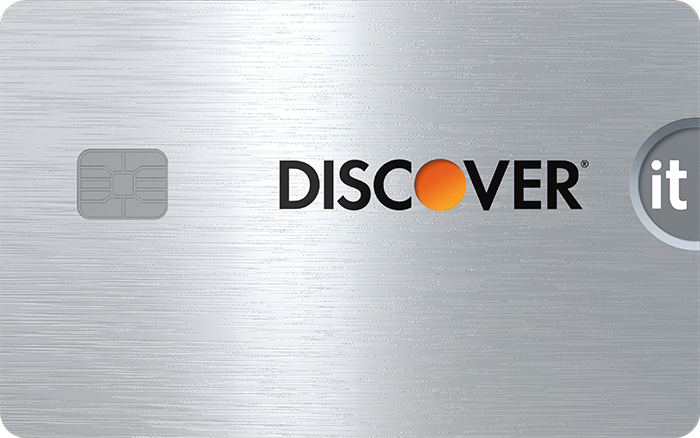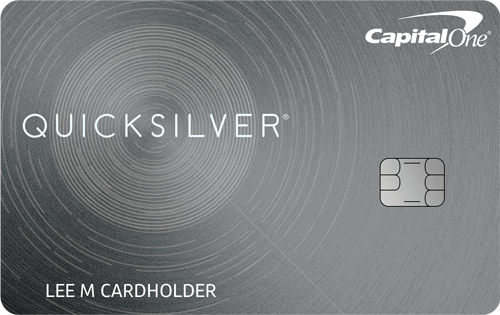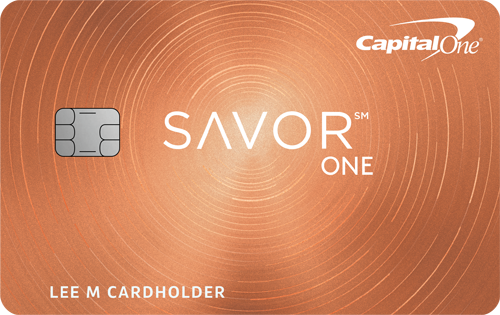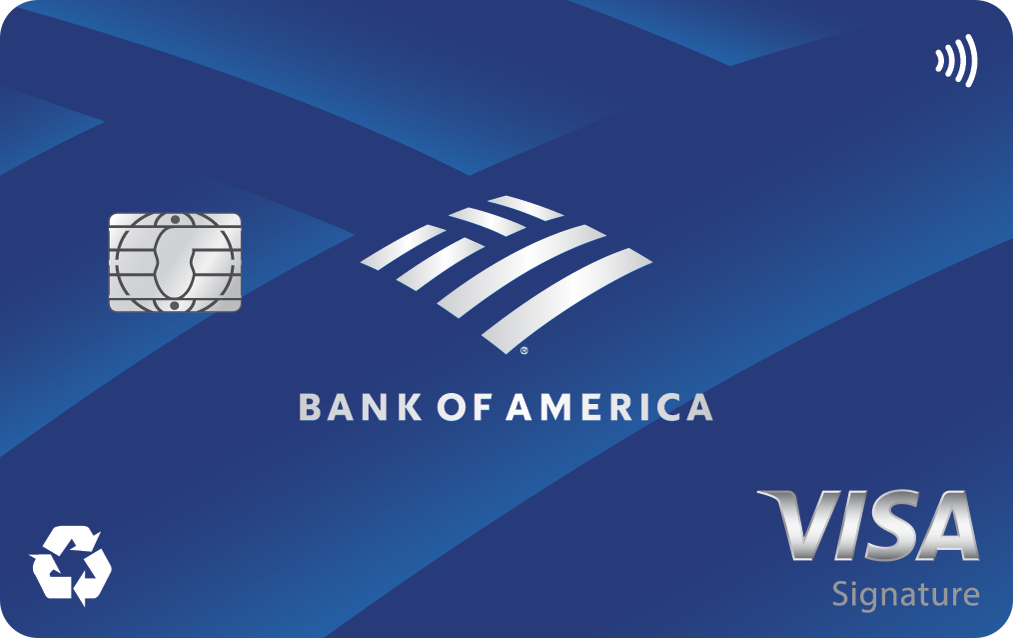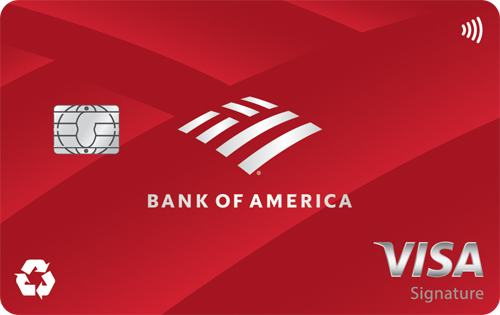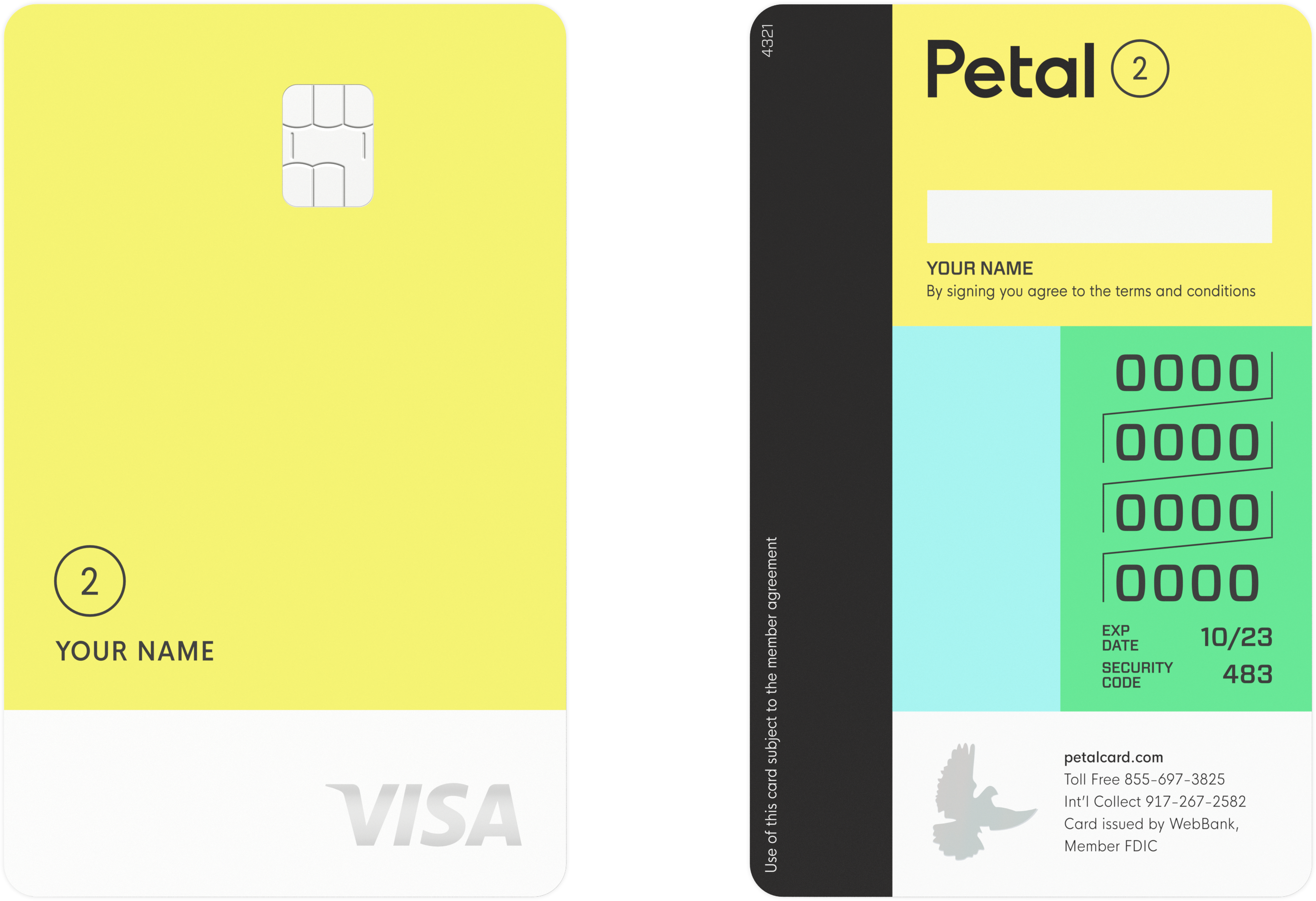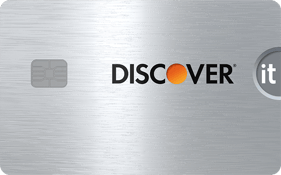The best student credit cards fit your unique financial needs while building a strong credit history. Dive into our list of the best cards for students to find the one that works best with your college lifestyle and strengthens your financial future.
By the time you leave school, you could have the kind of credit that unlocks low rates on loans and your pick of the best credit cards.
Best student credit cards
- Highest cash-back card for students: Discover it® Student Cash Back
- Gas stations and restaurants: Discover it® Student Chrome
- Unlimited cash back: Capital One Quicksilver Student Cash Rewards Credit Card
- Dining and entertainment cash back: Capital One SavorOne Student Cash Rewards Credit Card
- Travel and bonus: Bank of America® Travel Rewards credit card for Students
- Long intro APR: Bank of America® Customized Cash Rewards credit card for Students
- No credit history and cash back: Petal® 2 "Cash Back, No Fees" Visa® Credit Card
Discover it® Student Cash Back
Great for: Highest cash-back card for students
Fair/New to Credit Under(669)
Intro APR
Purchases: 0%, 6 months
Balance Transfers: 10.99%, 6 months
Regular APR
18.24% - 27.24% Variable APR
Rewards 5% cash back at different places each quarter up to the quarterly maximum when you activate. 1% unlimited cash back on all other purchases - automatically
1% - 5% Cashback
Annual Fee
$0
Welcome Offer N/A
Discover will match all the cash back you’ve earned at the end of your first year.
-
Student credit cards are sometimes light on perks, but this Discover one might surprise you. You can earn 5% cash back on up to $1,500 of spending in rotating bonus categories -- just opt in every quarter. And earning 1% back on other purchases plus an innovative Unlimited Cashback Match welcome bonus makes this one worth considering for college students. Read Full Review
-
- Rotating bonus categories
- Valuable sign-up bonus offer
- Good for avoiding fees
- Credit score monitoring
- Highly rated customer service
- No fixed bonus categories
-
- INTRO OFFER: Unlimited Cashback Match for all new cardmembers – only from Discover. Discover will automatically match all the cash back you’ve earned at the end of your first year! So you could turn $50 cash back into $100. Or turn $100 cash back into $200. There’s no minimum spending or maximum rewards. Just a dollar-for-dollar match.
- Earn 5% cash back on everyday purchases at different places you shop each quarter like grocery stores, restaurants, gas stations, and more, up to the quarterly maximum when you activate. Plus, earn unlimited 1% cash back on all other purchases—automatically.
- Redeem your rewards for cash at any time.
- No credit score required to apply.
- Discover could help you reduce exposure of your personal information online by helping you remove it from select people-search sites that could sell your data. It’s free, activate with the mobile app.
- No annual fee and build your credit with responsible use.
- 0% intro APR on purchases for 6 months, then the standard variable purchase APR of 18.24% - 27.24% applies.
- Terms and conditions apply.
Great for: Gas stations and restaurants
Fair/New to Credit Under(669)
Intro APR
Purchases: 0%, 6 months
Balance Transfers: 10.99%, 6 months
Regular APR
18.24% - 27.24% Variable APR
Rewards 2% cash back at Gas Stations and Restaurants on up to $1,000 in combined purchases each quarter. 1% unlimited cash back on all other purchases - automatically
1% - 2% Cashback
Annual Fee
$0
Welcome Offer N/A
Discover will match all the cash back you’ve earned at the end of your first year.
-
Has all the important perks for a student credit card. It's light on fees and doesn't charge an annual fee, plus it has a solid cash back program and a potentially big sign-up bonus. Read Full Review
-
- Great sign-up bonus offer
- Gas and restaurant rewards
- No annual fee
- Credit score monitoring
- No foreign transaction fee
- Low cash back rate
-
- INTRO OFFER: Unlimited Cashback Match for all new cardmembers – only from Discover. Discover will automatically match all the cash back you’ve earned at the end of your first year! So you could turn $50 cash back into $100. Or turn $100 cash back into $200. There’s no minimum spending or maximum rewards. Just a dollar-for-dollar match.
- Earn 2% cash back at Gas Stations and Restaurants on up to $1,000 in combined purchases each quarter, automatically. Plus earn unlimited 1% cash back on all other purchases.
- Redeem your rewards for cash at any time.
- No credit score required to apply.
- Discover could help you reduce exposure of your personal information online by helping you remove it from select people-search sites that could sell your data. It’s free, activate with the mobile app.
- No annual fee and build your credit with responsible use.
- 0% intro APR on purchases for 6 months, then the standard variable purchase APR of 18.24% - 27.24% applies.
- Terms and conditions apply.
Capital One Quicksilver Student Cash Rewards Credit Card
Great for: Unlimited cash back
On Capital One's Secure Website.
On Capital One's Secure Website.
Fair/New to Credit Under(669)
Intro APR
Purchases: N/A
Balance Transfers: N/A
Regular APR
19.99% - 29.99% (Variable)
Rewards Earn unlimited 1.5% cash back on every purchase, every day.
1.5% cash back
Annual Fee
$0
Welcome Offer Earn $50 Cash Back when you spend $100 in the first three months
Earn $50 Cash Back
-
Packs in one of the higher unlimited cash-back rates in the student credit card category. The fact that it has no annual fee and no foreign transaction fee makes this a strong offer to consider. Read Full Review
-
- Cash back rewards
- Limited-time welcome offer
- No annual fee
- No foreign transaction fee
- No intro APR offer
-
- Earn unlimited 1.5% cash back on every purchase, every day
- Early Spend Bonus: Earn $50 when you spend $100 in the first three months
- Earn 10% cash back on purchases made through Uber & Uber Eats, plus complimentary Uber One membership statement credits through 11/14/2024
- Enjoy peace of mind with $0 Fraud Liability so that you won't be responsible for unauthorized charges
- Enjoy no annual fee, foreign transaction fees, or hidden fees
- Lock your card in the Capital One Mobile app if it's misplaced, lost or stolen
- Earn up to $500 a year by referring friends and family when they're approved for a Capital One credit card
- Build your credit with responsible card use
- Whether you're at a 4-year university, community college or other higher education institution, this card might be an option for you
Capital One SavorOne Student Cash Rewards Credit Card
Great for: Dining and entertainment cash back
On Capital One's Secure Website.
On Capital One's Secure Website.
Fair/New to Credit Under(669)
Intro APR
Purchases: N/A
Balance Transfers: N/A
Regular APR
19.99% - 29.99% (Variable)
Rewards Earn 10% cash back on purchases made through Uber & Uber Eats, plus complimentary Uber One membership statement credits through 11/14/2024. Earn 8% cash back on entertainment purchases when you book through the Capital One Entertainment portal. Earn unlimited 5% cash back on hotels and rental cars booked through Capital One Travel, where you'll get Capital One's best prices on thousands of trip options. Earn unlimited 3% cash back on dining, entertainment, popular streaming services and at grocery stores (excluding superstores like Walmart and Target), with 1% on all other purchases
1%-10% cash back
Annual Fee
$0
Welcome Offer Earn $50 Cash Back when you spend $100 in the first three months
Earn $50 Cash Back
-
One of the top student credit cards, with no annual fee, no foreign transaction fee, and rewards that go toe to toe with just about any card. Read Full Review
-
- Competitive cash back rewards
- No annual fee
- No foreign transaction fee
- Sign-up bonus
- Purchase and travel coverage
- No intro APR offer
-
- Earn unlimited 3% cash back on dining, entertainment, popular streaming services and at grocery stores (excluding superstores like Walmart® and Target®), with 1% on all other purchases
- Early Spend Bonus: Earn $50 when you spend $100 in the first three months
- Earn 10% cash back on purchases made through Uber & Uber Eats, plus complimentary Uber One membership statement credits through 11/14/2024
- Enjoy peace of mind with $0 Fraud Liability so that you won't be responsible for unauthorized charges
- Enjoy no annual fee, foreign transaction fees, or hidden fees
- Earn unlimited 5% cash back on hotels and rental cars booked through Capital One Travel, where you'll get Capital One's best prices on thousands of trip options. Terms apply
- Earn up to $500 a year by referring friends and family when they're approved for a Capital One credit card
- Earn 8% cash back on entertainment purchases when you book through the Capital One Entertainment portal
- Build your credit with responsible card use
- Whether you're at a 4-year university, community college or other higher education institution, this card might be an option for you
Bank of America® Travel Rewards credit card for Students
Great for: Travel and bonus
On Bank of America's Secure Website.
On Bank of America's Secure Website.
Good/Excellent (670-850)
Intro APR 0% Intro APR for 15 billing cycles for purchases. 0% Intro APR for 15 billing cycles for any balance transfers made in the first 60 days. After the intro APR offer ends, 18.24% - 28.24% Variable APR on purchases and balance transfers will apply. Balance transfers include a fee of 3% for 60 days from account opening, then 4%.
Purchases: 0% Intro APR for 15 billing cycles for purchases
Balance Transfers: 0% Intro APR for 15 billing cycles for any balance transfers made in the first 60 days
Regular APR
18.24% - 28.24% (Variable)
Rewards Earn unlimited 1.5 points per $1 spent on all purchases, with no annual fee and no foreign transaction fees and your points don't expire as long as your account remains open.
1.5 points per dollar
Annual Fee
$0
Welcome Offer 25,000 online bonus points after you make at least $1,000 in purchases in the first 90 days of account opening - that can be a $250 statement credit toward travel purchases
25,000 points
-
With a generous sign-up bonus and a rewards program, it'll be harder to find a better card for students. Read Full Review
-
- Big sign-up bonus
- No annual fee
- Competitive rewards rate
- 0% intro APR offer
- No bonus categories
- Limited ways to use points
-
- Earn unlimited 1.5 points per $1 spent on all purchases, with no annual fee and no foreign transaction fees and your points don't expire as long as your account remains open.
- 25,000 online bonus points after you make at least $1,000 in purchases in the first 90 days of account opening - that can be a $250 statement credit toward travel purchases.
- Use your card to book your trip how and where you want - you're not limited to specific websites with blackout dates or restrictions.
- Redeem points for a statement credit to pay for travel or dining purchases, such as flights, hotel stays, car and vacation rentals, baggage fees, and also at restaurants including takeout.
- 0% Intro APR for 15 billing cycles for purchases, and for any balance transfers made in the first 60 days. After the Intro APR offer ends, a Variable APR that’s currently 18.24% - 28.24% will apply. A 3% Intro balance transfer fee will apply for the first 60 days your account is open. After the Intro balance transfer fee offer ends, the fee for future balance transfers is 4%.
- When handled responsibly, a credit card can help you build your credit history, which could be helpful when looking for an apartment, a car loan, and even a job. Access your FICO® Score for free within Online Banking or your Mobile Banking app.
- Contactless Cards - The security of a chip card, with the convenience of a tap.
- This online only offer may not be available if you leave this page or if you visit a Bank of America financial center. You can take advantage of this offer when you apply now.
Bank of America® Customized Cash Rewards credit card for Students
Great for: Long intro APR
On Bank of America's Secure Website.
On Bank of America's Secure Website.
Good/Excellent (670-850)
Intro APR 0% Intro APR for 15 billing cycles for purchases. 0% Intro APR for 15 billing cycles for any balance transfers made in the first 60 days. After the intro APR offer ends, 18.24% - 28.24% Variable APR on purchases and balance transfers will apply. Balance transfers include a fee of 3% for 60 days from account opening, then 4%.
Purchases: 0% Intro APR for 15 billing cycles for purchases
Balance Transfers: 0% Intro APR for 15 billing cycles for any balance transfers made in the first 60 days
Regular APR
18.24% - 28.24% (Variable)
Rewards 3% cash back in the category of your choice, 2% at grocery stores and wholesale clubs (up to $2,500 in combined choice category/grocery store/wholesale club quarterly purchases) and unlimited 1% on other purchases.
1% - 3% cash back
Annual Fee
$0
Welcome Offer $200 online cash rewards bonus after you make at least $1,000 in purchases in the first 90 days of account opening
$200 cash rewards
-
This student credit card has it all. You'll have a hard time finding a student card with a cash back program this lucrative to go along with a sign-up bonus. Read Full Review
-
- Competitive sign-up bonus
- Bonus cash back in a category of your choice
- No annual fee
- 0% intro APR offer
- Foreign transaction fee
- Limit on bonus cash back
-
- $200 online cash rewards bonus after you make at least $1,000 in purchases in the first 90 days of account opening.
- Earn 3% cash back in the category of your choice, automatic 2% at grocery stores and wholesale clubs (up to $2,500 in combined choice category/grocery store/wholesale club quarterly purchases) and unlimited 1% on all other purchases.
- Choose 3% cash back on gas and EV charging station, online shopping/cable/internet/phone plan/streaming, dining, travel, drug store/pharmacy or home improvement/furnishing purchases.
- No annual fee and cash rewards don’t expire as long as your account remains open.
- 0% Intro APR for 15 billing cycles for purchases, and for any balance transfers made in the first 60 days. After the Intro APR offer ends, a Variable APR that’s currently 18.24% - 28.24% will apply. A 3% Intro balance transfer fee will apply for the first 60 days your account is open. After the Intro balance transfer fee offer ends, the fee for future balance transfers is 4%.
- When handled responsibly, a credit card can help you build your credit history, which could be helpful when looking for an apartment, a car loan, and even a job. Access your FICO® Score for free within Online Banking or your Mobile Banking app.
- Contactless Cards - The security of a chip card, with the convenience of a tap.
- This online only offer may not be available if you leave this page or if you visit a Bank of America financial center. You can take advantage of this offer when you apply now.
Petal® 2 "Cash Back, No Fees" Visa® Credit Card
Great for: No credit history and cash back
Fair/New to Credit Under(669)
Regular APR
18.24 - 32.24% Variable
Rewards
Up to 1.5% cash back on eligible purchases after making 12 on-time monthly payments. 1% cash back on eligible purchases right away. 2% - 10% cash back at select merchants.
-
If you need to build or rebuild credit, pay attention to this card. You qualify based on bank information, rather than credit, and there are no fees of any kind. Best of all, if you pay your monthly bill on time every time, your cash back rate will grow from 1% to 1.5% on purchases over your first year.
-
- No credit history required
- Competitive cash back rewards
- No fees
- Fixed payment due date
- Not for rebuilding credit
-
- No fees whatsoever. No late fee, foreign transaction fee, annual fee, or any-other-kind-of-fee, fee.
- Variable APRs range from 18.24% - 32.24%
- Up to 1.5% cash back on eligible purchases after making 12 on-time monthly payments.
- 1% cash back on eligible purchases right away
- 2% - 10% cash back at select merchants
- $300 - $10,000 credit limits
- No credit score? No problem. If eligible, we'll create your Cash Score instead.
- See if you're pre-approved within minutes without impacting your credit score.
- Build credit alongside hundreds of thousands of Petal card members.
- Petal reports to all 3 major credit bureaus.
- No deposits required
- Card issued by WebBank
What is a student credit card?
A student credit card is just like a regular credit card, except it's designed specifically for students. Generally, the difference is that you don't need a credit history and the income requirements are flexible. Some student cards may also sport the college mascot or logo.
How to choose a student credit card
There are dozens of great student cards out there. So how do you find the right one? Just follow these steps.
1. Figure out your top spending categories
You can earn a surprising amount of rewards, even with a small budget, if you can maximize your bonus categories. Look at where you spend the most money -- dining out, groceries, gas, etc. -- and look for credit cards that offer big rewards on those purchases. The best card for you will provide bonus rewards in at least one, but ideally several, of your top spending categories.
2. Eliminate any card with an annual fee
Some credit cards charge an annual fee just to keep your account open. For the right card, these fees can be worth paying since expensive cards can come with useful perks and rewards. However, it's unlikely to be worthwhile until after you graduate and have more expenses. Skip them for now.
3. Find an intro APR card if you need a little time
A few student cards will come with an introductory offer that lowers your interest rate to 0% for a set period. For student cards, this is typically six months. These offers can be useful if you know you'll need to make a large purchase and pay it off over a few months. Just make sure you can pay it off before the offer expires since the regular APR will kick in at that point.
4. Choose a card with no FX fees for travel abroad
Foreign transaction (FX) fees are extra fees that apply when you make purchases in a foreign currency (i.e., not in U.S. dollars) or that route through a foreign bank. If you're going to travel abroad, such as through a study abroad program, be sure you have a card that doesn't charge foreign transaction fees. (If a card has an FX fee, it will be listed in its rates and fees documentation.)
5. Read over the terms and conditions carefully
Before you apply for anything, including credit cards, be sure to read through the terms. For credit cards specifically, look over the Schumer Box -- this is the chart that shows all the interest rates and fees. You'll want to be especially familiar with:
- The APR (annual percentage rate)
- The grace period (how long you have to pay your bill before you get charged interest)
- The transaction fees
6. Consider a secured card as a backup plan
Student credit cards are intended for students who have no credit history. If you've already had some bumps in the road with your credit, you may not be approved for a student card. In this case, consider a secured credit card. Secured cards require a refundable deposit, so they can be easier to get approved for even if you have a rocky credit history.
Compare the best credit cards for students
| Card | Rating | Great For |
|---|---|---|
|
|
Rating image, 5.00 out of 5 stars.
5.00/5
Our ratings are based on a 5 star scale.
5 stars equals Best.
4 stars equals Excellent.
3 stars equals Good.
2 stars equals Fair.
1 star equals Poor.
We want your money to work harder for you. Which is why our ratings are biased toward offers that deliver versatility while cutting out-of-pocket costs.
|
Great For: Highest cash-back card for students |
|
Rating image, 4.75 out of 5 stars.
4.75/5
Our ratings are based on a 5 star scale.
5 stars equals Best.
4 stars equals Excellent.
3 stars equals Good.
2 stars equals Fair.
1 star equals Poor.
We want your money to work harder for you. Which is why our ratings are biased toward offers that deliver versatility while cutting out-of-pocket costs.
|
Great For: Gas stations and restaurants |
|
|
Rating image, 4.00 out of 5 stars.
4.00/5
Our ratings are based on a 5 star scale.
5 stars equals Best.
4 stars equals Excellent.
3 stars equals Good.
2 stars equals Fair.
1 star equals Poor.
We want your money to work harder for you. Which is why our ratings are biased toward offers that deliver versatility while cutting out-of-pocket costs.
|
Great For: Unlimited cash back |
|
|
Rating image, 4.00 out of 5 stars.
4.00/5
Our ratings are based on a 5 star scale.
5 stars equals Best.
4 stars equals Excellent.
3 stars equals Good.
2 stars equals Fair.
1 star equals Poor.
We want your money to work harder for you. Which is why our ratings are biased toward offers that deliver versatility while cutting out-of-pocket costs.
|
Great For: Dining and entertainment cash back |
|
|
Rating image, 5.00 out of 5 stars.
5.00/5
Our ratings are based on a 5 star scale.
5 stars equals Best.
4 stars equals Excellent.
3 stars equals Good.
2 stars equals Fair.
1 star equals Poor.
We want your money to work harder for you. Which is why our ratings are biased toward offers that deliver versatility while cutting out-of-pocket costs.
|
Great For: Travel and bonus |
|
|
Rating image, 4.25 out of 5 stars.
4.25/5
Our ratings are based on a 5 star scale.
5 stars equals Best.
4 stars equals Excellent.
3 stars equals Good.
2 stars equals Fair.
1 star equals Poor.
We want your money to work harder for you. Which is why our ratings are biased toward offers that deliver versatility while cutting out-of-pocket costs.
|
Great For: Long intro APR |
|
|
Rating image, 4.25 out of 5 stars.
4.25/5
Our ratings are based on a 5 star scale.
5 stars equals Best.
4 stars equals Excellent.
3 stars equals Good.
2 stars equals Fair.
1 star equals Poor.
We want your money to work harder for you. Which is why our ratings are biased toward offers that deliver versatility while cutting out-of-pocket costs.
|
Great For: No credit history and cash back |
Why should students build credit?
Credit cards have a lot going for them, like rewards and security. But they can also help you build credit when used responsibly. What's the big deal? Your credit history is a huge part of your personal finances. Here are just a few real ways it can impact you:
- Buying a car: Having a good credit history isn't just important for getting a car loan. It's also vital to getting a good car loan. Having good credit is the best way to reduce your interest rate and down payment.
- Buying a house: With housing prices as high as they are, it would be extremely difficult to buy a house without a mortgage. And it's almost as hard to get a mortgage without credit history. Even a great down payment may not be enough if your credit history is poor or even just unestablished.
- Getting a job: Some industries (especially finance) require a credit check as a part of the application process. Good credit could give you an edge in these fields.
- Starting a business: Want to turn your college side hustle into a big business? Having good credit will help. Most banks will require you to personally guarantee your business loan or credit line, so good personal credit will go a long way here.
- Renting an apartment: You can 100% lose an apartment because of failing a credit check, even if you can afford it. Big apartment corporations (which own a distressing amount of the rentals in major cities) can be particularly touchy about credit checks.
- Setting up utilities: Some utility companies will require a credit check to open an account. Having a good credit history can save you from having to pay a big deposit.
- Getting a cellphone: Just opening a post-paid cellphone line can require good credit -- or a hefty deposit. Beyond that, all of those awesome deals that let you get a new phone and make monthly payments as part of your cellphone bill? Yeah, that requires good credit, too.
- Opening an insurance policy: Many insurers will check your credit before offering you a policy. Good credit can potentially get you a better insurance rate.
How to get a student credit card with no credit
The great thing about student credit cards is that you don't need any kind of credit history to qualify. Indeed, these cards are specifically designed for young folks who haven't established their credit yet ,and the issuers don't expect you to have credit.
In other words, the only thing you really need to do to get a student card with no credit history is:
- Be a student
- Apply
Alright, it's not quite that simple; you also need some sort of income. If you're between 18 and 21, it must be independent income you earned through a job, grants/scholarships, or consistent allowance. If you're 21 or older, you can also count household income from a spouse or partner. (Student loans can sometimes count, but it varies by issuer.)
That said, the issuers also know college students aren't made of money, so don't worry if you don't have a lot of income -- they get it. Definitely do not lie on your application, as you may be asked to prove your financials.
How many credit cards should a student have?
In general, I'd suggest limiting yourself to one or two cards to start. (You're unlikely to get approved for more than that for at least 6 to 12 months anyway.)
From a credit standpoint, applying for too many cards in a short window can hurt your credit score. Each application means a hard credit pull; while the impact from hard pulls is usually minor, it gets worse if you stack up too many of them. Your credit age is also a big part of your credit score. Young accounts drag down your average account age, which can hurt your score.
Even if we look at it from a purely practical perspective, having a lot of cards makes it much harder to keep track of everything. You may wind up missing due dates, forgetting to activate bonus rewards, or losing rewards that expire.
How to apply for a credit card as a student
Other than answering a few extra questions, applying for a student credit card is the same as applying for any other card. You can do it online in a few easy steps:
- Choose your credit card. We offer some advice on how to do this above.
- Fill out the online application. You'll need personal info, like your address and Social Security number. You'll also need to provide information about your income, as well as the name of your school and basic details about your enrollment.
- Click "Apply." Most online credit card applications take just a few minutes to give you a decision.
Occasionally, you may get a message that your application needs further consideration. This generally means the application algorithm didn't have enough information, so a human needs to take a look.
Sometimes you'll get approved or rejected without any further input, typically through a letter in the mail. Other times, you may get a letter requesting more information, such as proof of income or proof of enrollment. Once you provide the necessary documents, a decision will be made.
How to make the most of your student credit card
So, you have your new card. What now? Here's how to make the most of it:
- Pay on time, every time. This is the most important thing you can do to build good credit with your new card.
- Set up autopay. Automatic payments ensure you never miss a due date.
- Pay in full every month. Ideally, never carry a balance from month to month, since this is how you get charged interest fees.
- Keep your balances low. If you can't pay in full, try to keep your utilization (how much of your credit limit you're using) below 30%.
- Redeem your rewards regularly. Credit card rewards do you no good if you don't use them.
- Track your credit score. Most credit cards offer free credit score tracking, so keep an eye on your growing score to see your progress.
Learn more: Credit Cards 101
Credit card advice from our academic experts

Amit Sinha
Professor, Finance and Quantitative Methods at Bradley University
What considerations should students be aware of before getting a credit card?
The most important thing to keep in mind is that credit cards are not free money, but rather a form of debt that has to be paid back. There are credit cards specifically targeted for students, and students wanting to have credit cards should get those, instead of just any credit card. These student credit cards may have restrictions like lower credit limits, but they also provide the opportunity to learn how to manage credit. Besides, some student credit cards provide some financial rewards, especially if students get good grades and maintain particular grade levels. Some credit cards provide credit monitoring services for free, and that ought to be another consideration while selecting a card.
How should college students pay credit cards off?
The awareness that credit cards are a form of debt and ought to be paid off will allow for their reasonable use which is the key to paying credit card balances. Students have a limited supply of funds, and low statement balances would be easier to pay off then higher balances. Part-time work, financial support from parents, and, depending upon the amount, scholarship money could be used to pay off balances.
What happens to student credit cards when you graduate?
Well you certainly do not have to cancel the student credit card. The issuer of the student credit card could either reclassify or roll it into a new card. The process is seamless and may include perks not available for the student version credit card.

Adel Varghese
Instructional Associate Professor at Texas A&M University
(With assistance from Christina Ntova)
What factors should students consider when choosing a credit card?
Choosing a credit card in the present world is challenging, especially for students, as most do not have previous experience or knowledge; millions of catchy advertisements can sway them to an uncertain choice. First, we examine students who plan to pay the balance on time. These students usually focus on annual fees (generally, cards with no annual fees) and the associated perks. Credit cards offer perks such as points, cash back, no currency conversion fees, rental car insurance, extended product warranty, lowest price matching, and trip cancellation insurance.
If a student does not plan to pay the entire balance each month, they should pay more attention to the usual factors. These credit card details include interest rates and late fees, balance transfer fees (when changing credit cards), cash advance fees, foreign transaction fees, etc.
In sum, a student would need to examine their expenses (many say to track them for one month) or know of any upcoming expenses and should choose the credit card accordingly. They would want to line up different features and see which ones they value the most, and then see which credit card offers those features.
Students also should be wary of applying for too many credit cards at once, as hard credit inquiries can negatively impact their credit score temporarily. (Soft pulls, such as checking your score through an app, do not impact your score.) Usability is another critical factor to note. Is the credit card you choose widely accepted by merchants? Finally, students often look for a frictionless application, meaning Venmo credit cards may become more popular among students. However, because of potential perks lost, a student should take time in selecting the right credit card for them.
How can college students benefit from getting a credit card?
A student benefits mainly by borrowing against future income for expenses now. For example, suppose a student needs to buy a textbook now, but their paycheck will arrive in two weeks; with a credit card, the student can safely make the purchase now. This same thinking also applies to emergencies. An extra benefit lies in the card's statements -- these can serve as proof of purchase if a receipt is lost. The canalso help track monthly expenses so a student can design a budget that aligns with their specific needs and habits.
In addition to money now, two other significant benefits of a student owning a credit card in college are:
- Building a credit history, especially if a student is a new immigrant or international student, and establishing good credit habits.
- Available credit usage -- the percentage of credit used compared to your limit -- impacts credit scores. Generally, the more you use your available credit, the lower your score will be (experts say usage should not exceed 30%). Therefore, making on-time payments and increasing that credit limit benefits your score. For example, spending $600 of a $1,500 credit limit will be a 40% credit usage, but $600 used in a $2,500 limit only accounts for 24% of the available credit. All of these factors, along with fees and interest payments, contribute to students learning good payment habits to avoid stiff penalties. Hopefully these habits will translate to other areas of a student's life.
What should college students know before making credit card purchases?
Apart from missing benefits or getting charged extra fees, students must have a set budget and not surpass their limit through extreme purchases, even if the credit limit permits it. Always make sure you can pay the total balance, or at least the minimum balance, each month. And remember, getting a new credit card to pay for another is not a good idea; the snowball effect it can create may be greater than you'd expect, and banks are likely to find out.
Lastly, with respect to cash or a debit card, the credit card offers these pros and cons:
- Pros: A student receives extra perks and usage rewards, establishes a good credit history, and learns to manage expenses independently.
- Cons: A student has to spend time accounting for the amount spent. With cash, if the money is not there, it simply cannot be spent.
-
Article sources
Our student credit cards methodology
At The Motley Fool Ascent, we rate student credit cards on a five-star scale (1 = poor, 5 = best). Our rating criteria includes rewards rate, credit score requirements, annual fees, and perks specific to students.
Our highest-rated student credit cards have:
- A rewards rate above 1.5% (or 1.5x points) with average spending
- Flexible credit score requirements
- No annual fees
- Perks that bring value to students like APR offers, purchase protections, and no foreign transaction fees
We combine these factors with an evaluation of brand reputation and customer satisfaction to ensure you're getting the best student credit card recommendations. Our aim is to maintain a balanced best-of list featuring top-scoring student cards from reputable brands.
Ordering within lists is influenced by advertiser compensation, including featured placements at the top of a given list, but our product recommendations are NEVER influenced by advertisers. Learn more about how The Ascent rates credit cards.
FAQs
-
Student credit cards aren't necessarily better than other credit cards, but they're made with students in mind. Student credit cards typically have more relaxed approval requirements, and students with minimal credit history will have better approval odds for these cards.
A student card can be a great starter credit card for a college student who wants to build their credit and learn financial habits.
-
Student credit cards can be a good way for students to learn how to budget and build their credit.
However, everyone should use credit cards with care. It's best to only make purchases you can afford, and to pay the bill on time each month to avoid big interest charges and credit damage.
-
Student credit cards tend to have lower credit limits than other types of cards, with ranges of $300 to $1,000 being typical. Your credit limit will be set by the card issuer when it approves your card, and it will depend on a lot of factors, including your credit history and income.
Even if you start with a low limit, your card issuer might increase the credit limit on your student credit card after you've made several on-time payments.
-
Student credit cards work like any other unsecured credit card. The cardholder has access to a revolving line of credit that allows them to make purchases now and pay them off at a later date. The amount you can purchase will be limited by the size of your credit line, also known as your credit limit.
Every billing cycle, the credit card issuer will send you a statement with your transactions and any previous unpaid balance. You can choose to make a minimum payment, pay the full statement balance, or pay a different amount. Paying your full balance will allow you to avoid being charged interest fees. As you pay down your balance, you'll have more available credit you can use again.
-
Yes, you can apply with no or limited credit history. In fact, you don't need any credit history at all to apply for a student credit card. That's because student cards are specifically designed to help college students build credit. Paying your credit card on time every month can help you build a positive payment history, which is a big part of your credit scores. Over time, responsible credit card use will lead to good credit scores and better credit opportunities.
-
Finding the best student credit cards for you is a matter of comparing the options. Look for a student card with no annual fee and helpful credit tools, such as a card that reports to all three credit bureaus and offers free credit scores. You may also want a student card that offers purchase rewards like cash back on dining and gas purchases.
Our Credit Cards Experts
We're firm believers in the Golden Rule, which is why editorial opinions are ours alone and have not been previously reviewed, approved, or endorsed by included advertisers. The Ascent, a Motley Fool service, does not cover all offers on the market. The Ascent has a dedicated team of editors and analysts focused on personal finance, and they follow the same set of publishing standards and editorial integrity while maintaining professional separation from the analysts and editors on other Motley Fool brands.
The Motley Fool owns shares of and recommends Visa.
